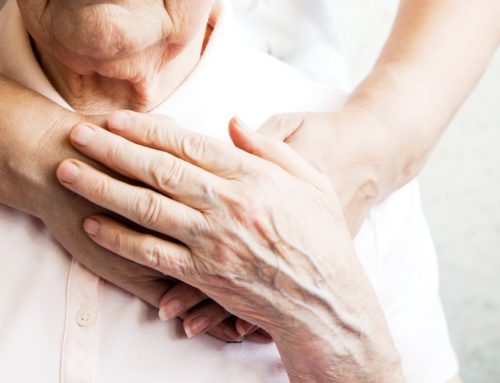It can be overwhelming to learn your loved one has a terminal prognosis and it’s time to consider hospice care. You may find yourself unsure what the difference is between hospice care and standard, curative care. And within hospice, what level and type of care is best for your loved one. Provista Home Hospice can help you understand hospice care and answer all your questions.
What is Hospice Care?
When a patient receives a terminally ill prognosis the type of health care they receive is often changed. Depending on the patient’s current life expectancy, hospice care may be the next step in their treatment plan. The primary focus of hospice care is no longer patient recovery. Instead, hospice care focuses on managing a patient’s symptoms and pain to improve their quality of life. In hospice care, patients are treated so they can focus on the people and things that care the most to them. This goes beyond disease management as well. Hospice care often includes emotional and spiritual aid for patients and their loved ones. If you think your loved one may be in need of hospice services, review our Hospice at Home Evaluation Checklist.
Understanding Hospice Care Services
The primary difference between hospice care services and recovery-focused care is the former’s focus on the patient’s quality of life. Many life-prolonging treatment plans are difficult on the patient. They can lead to new symptoms, and additional stress and pain. This is especially true of aggressive treatments like extensive surgery and chemotherapy. Instead, hospice care services focus on making your loved one comfortable and improving their quality of life.
Symptom Management
Hospice care focuses on managing the patient’s symptoms. This often includes a review of the medications and other therapies the patient is receiving. Some medications or therapies may be ceased if the side effects they produce are considered more harmful to the patient’s quality of life than the curative measures they provide.
Pain Management
Pain management is used in the hospice setting to make the patient as comfortable as possible to improve their life quality. This can be important as patients in hospice care often continue living for weeks, even months while in hospice care. This helps make the end of the patient’s life more manageable. Hospice pain management can include the use of opioid pain medication.
Emotional and Spiritual Support Services
Patients can also suffer from anxiety while in hospice. The physical symptoms of anxiety can in some cases increase the patient’s response to physical pain. Pending on doctor review, this is often treated by anti-anxiety medication. In addition to medication management, hospice care includes visits from a medical social worker and spiritual advisor. These services are to help the patient and their family deal with the patient’s death. Medical social worker and spiritual advisor services include grief and bereavement advisement after the patient has passed.
The Difference Between Hospice and Palliative Care
There are two primary differences between hospice care and palliative care. The first is timing. Hospice care begins when two or more physicians agree the patient’s current life expectancy is six months or less. Palliative care can start as soon as a patient receives a life-limiting diagnosis. The second difference between hospice and palliative care is palliative care can work in concert with a patient’s curative treatment care plan. Whereas hospice care includes the cessation of recovery-focused treatment.
Provista Home Hospice offers a palliative bridge between home health care and hospice care. This helps make the transition of care types simpler for your family and your loved one.
The Four Steps of Hospice Care
According to Medicare there are four, distinct steps of hospice care available for patients and their families. Each level of care meets a specific patient need. Some patients move through the steps of hospice care quickly and others will remain in one step throughout their tenure. It is up to the unique needs of each individual patient.
Step One: Routine Home Care
Routine home care is the most basic level of hospice care. This includes part-time nursing or home health aide, therapy sessions (physical, occupational, speech), and medical social services. In addition to services, this level of care includes more advanced supplies like durable medical equipment or injectable medication.
Step Two: Continuous Home Care
Patients move to the second step of care when they require eight or more hours of continuous care within a day. This care is focused on the management of acute medical symptoms and palliation. It could also include acute anxiety, panic attacks, or a breakdown in the primary caregiver support system. Provista Home Hospice provides services for step one and step two patients.
Step Three: General Inpatient Care
The third step is for patients who reach a severity of short-term they cannot gain appropriate care at home. While comparable to Routine Home Care, patients in General Inpatient Care have access to skilled medical and emotional support professionals 24/7.
Step Four: Respite Care
This step is to provide respite to the patient’s family as primary caregivers. If the caregiver is unable to take care of the patient due to extenuating circumstances of caregiver fatigue, the patient may be admitted to an inpatient facility temporarily. In addition to inpatient facility care, Respite Care can be provided in home. Respite Care is only available for five days at which the patient is discharged back to their primary caregiver.
Benefits of Home Hospice
Home is where you hang your hat. Despite the proverb, it is not difficult to see why many hospice care patients prefer home hospice to inpatient facilities. With hospice care like Provista Home Hospice focused more on quality of life and comfort as opposed to curative treatment, many hospice care patients desire to be surrounded by the comfort of their home and family during this time.
With the advance of Telehealth and Telemonitoring, the level of medical care a home hospice patient receives is often on par with that received at an inpatient facility. Home hospice professionals care for fewer patients than their facility counterparts. This leads to a more personal and insightful level of care for home hospice patients.
Click Here to learn more about the benefits of home hospice care.
Hospice Care and COVID-19
Home hospice care is the safest hospice care available to your loved one at this time. Home hospice care limits the amount of people and contact to which your loved one and families are subjected. Your home is used by your family, your loved one, and the home hospice professionals needed to treat your loved one.
Compare an inpatient facility that includes many patients and their families, a full staff of medical professionals, and additional facility staff. For the health and safety of you and your loved ones against COVID-19, home hospice is best. Provista Home Hospice caretakers follow the latest CDC guidelines and are outfitted with the necessary PPE to prevent the transmission of infectious diseases, including COVID-19.
How to Learn More
If you have more questions about hospice care or home hospice please Contact Us. Are you a medical professional looking to refer a patient? You can refer a patient to Provista Home Hospice HERE.
About Provista Home Hospice
For over 15 years, our experienced and trustworthy caregivers have been providing hospice care to the Dallas-Fort Worth area. Our mission is simple: tenderly care for our patients and their loved ones with expert medical care, emotional support, and spiritual guidance to make their end of life comfortable. At Provista Home Hospice, our team understands the significance and honor in supporting the family and patient in their final journey of life.







